Let's talk Alaskan Malamutes
Despite a name derived from a northernmost region, the Alaskan Malamute is anything but cold-tempered; in fact, he is quite the opposite. The spitz-type breed, characterised by a curled tail, erect ears, and thick, dense fur, has a disposition that’s as big as their hulking body. The Alaskan Malamute breed is the largest of sled dogs and a born pack animal. Bringing them into your human pack then will suit them just fine.
Official name: Alaskan Malamute
Other names: None
Origins: United States of America
Tendencia a babear
{score 0 out of 5}Nivel de muda de pelo:
{score 0 out of 5}Nivel de energía
{score 0 out of 5}Compatibilidad con otras mascotas
{score 0 out of 5}¿Clima cálido?
{score 0 out of 5}Apto para vivir en departamento
{score 0 out of 5}¿Mascota familiar? *
{score 0 out of 5}Puede quedarse solo
{score 0 out of 5}
| Macho | Hembra |
|---|---|
| Altura | Altura |
| 64 - 65 | 58 - 59 |
| Peso | Peso |
| 38 - 39 | 34 - 35 |
| Adulto | |
|---|---|
| 15 months to 5 years | |
| Madurez | Adulto mayor |
| 5 to 8 years | from 8 years |
| Bebé | |
| Birth to 2 months | |
Tendencia a babear
{score 0 out of 5}Nivel de muda de pelo:
{score 0 out of 5}Nivel de energía
{score 0 out of 5}Compatibilidad con otras mascotas
{score 0 out of 5}¿Clima cálido?
{score 0 out of 5}Apto para vivir en departamento
{score 0 out of 5}¿Mascota familiar? *
{score 0 out of 5}Puede quedarse solo
{score 0 out of 5}
| Macho | Hembra |
|---|---|
| Altura | Altura |
| 64 - 65 | 58 - 59 |
| Peso | Peso |
| 38 - 39 | 34 - 35 |
| Adulto | |
|---|---|
| 15 months to 5 years | |
| Madurez | Adulto mayor |
| 5 to 8 years | from 8 years |
| Bebé | |
| Birth to 2 months | |
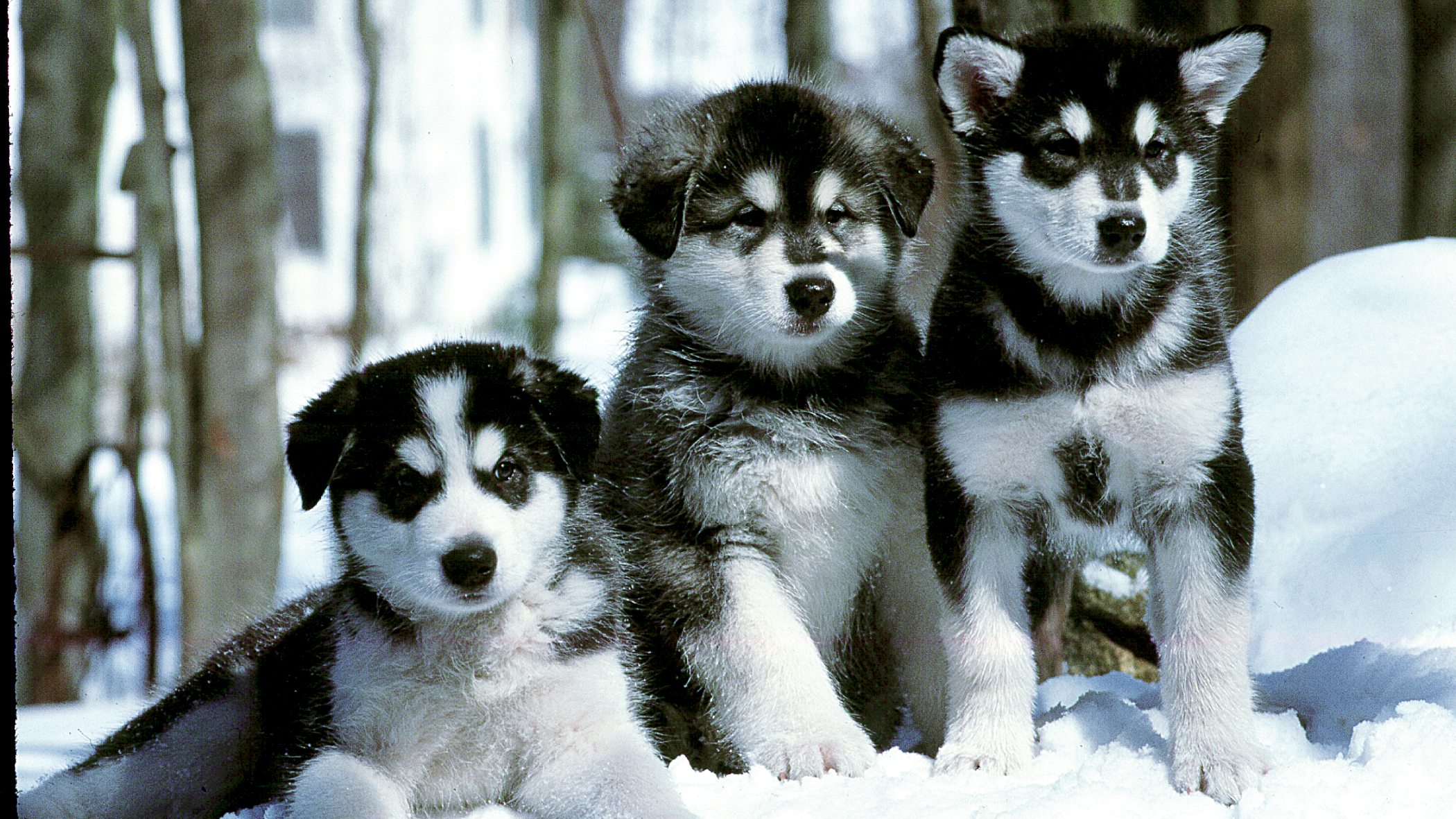
Get to know the Alaskan Malamute
All you need to know about the breed
Fluffy and affectionate, the Alaskan Malamute is a carefree dog that has family at the forefront of their mind and their job next. The breed’s deep wide chest, substantial limbs, and large head signal “working dog”. Originally bred as a sled dog in the far reaches of—you guessed it— Alaska, they were used to run over large distances at low speeds to haul heavy goods.
They have now developed into a gentle breed that’s known to be great with everyone, especially children. The Alaskan Malamute temperament helps them fit right in with the pack at home, whether they're sledders or not. They bond with their family, but will only do so if training is firm early on. Once the boundaries are set, the breed is a snuggler extraordinaire.
The Alaskan Malamute’s signature plush fur will need regular upkeep, including daily brushing with a metal comb and pin brush, and an undercoat rake added during the molting season twice a year.
The Alaskan Malamute can typically reach up to 85 pounds in size and is endowed with great strength. He is a spitz-type dog, the hallmark of which is a tail that curves over their back and a sturdy body covered in thick fur. The Alaskan Malamute’s daily exercise doesn’t have to come in the form of pulling sleds: they fully enjoy tests of obedience and agility and also outdoor sports, including hiking and even swimming. The perfect companion to an outdoorsy, active owner.
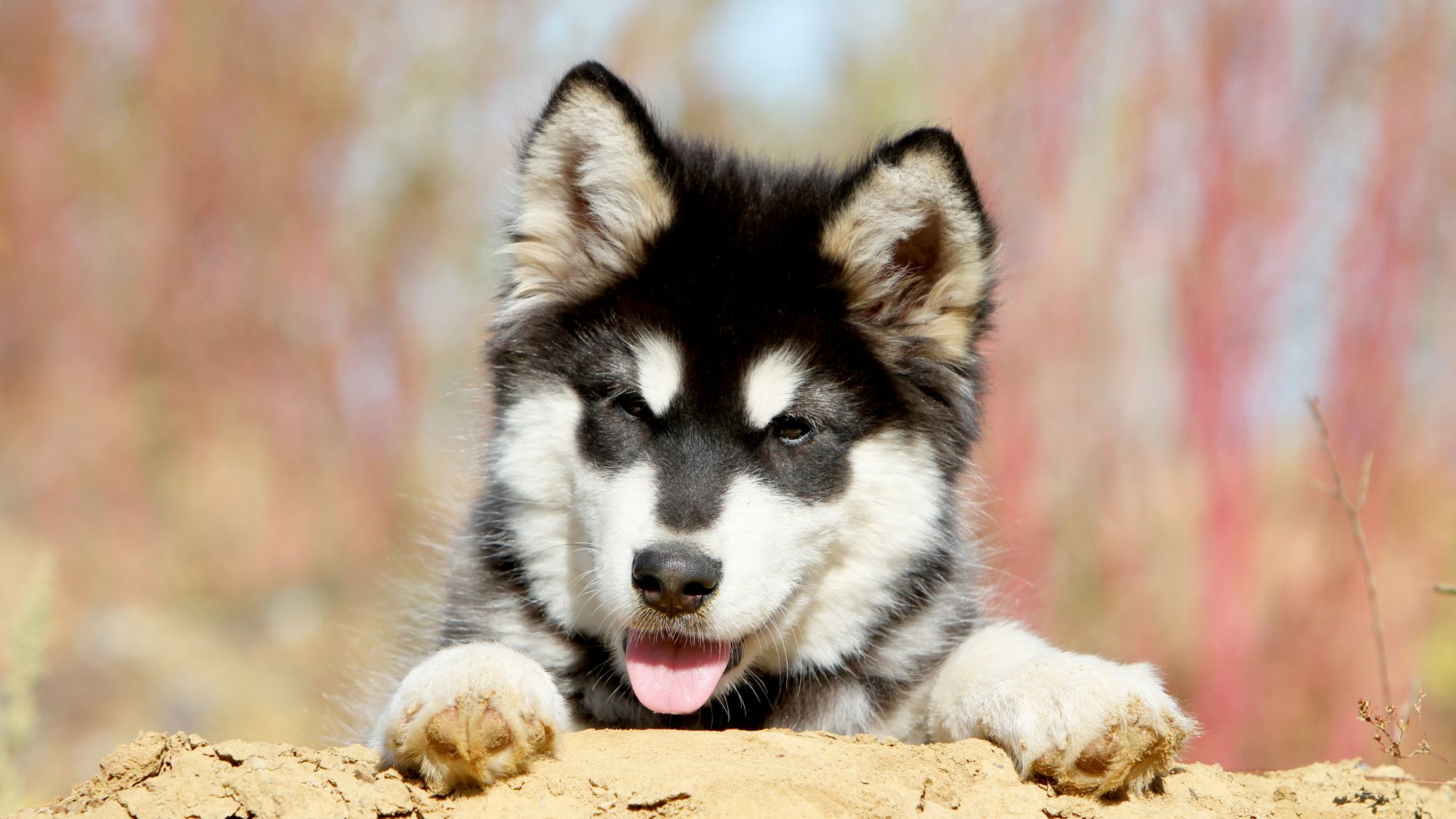
2 facts about Alaskan Malamutes
1. A special way of communicating
Most dogs bark but the Alaskan Malamute is on the quiet side. How do they communicate? By emitting a funny sound akin to “woo-woo". The breed will also at times let out a howl, particularly when they’re lonely or bored.
2. Let’s be friends!
Being greeted at the door by a furry face like this breed is a great surprise. But the Alaskan Malamute personality is just that delightful. There are few people whom the Malamute won’t want to say hi to—and trust—given their pleasant face and even-keeled disposition. That said, security is not their strong suit.
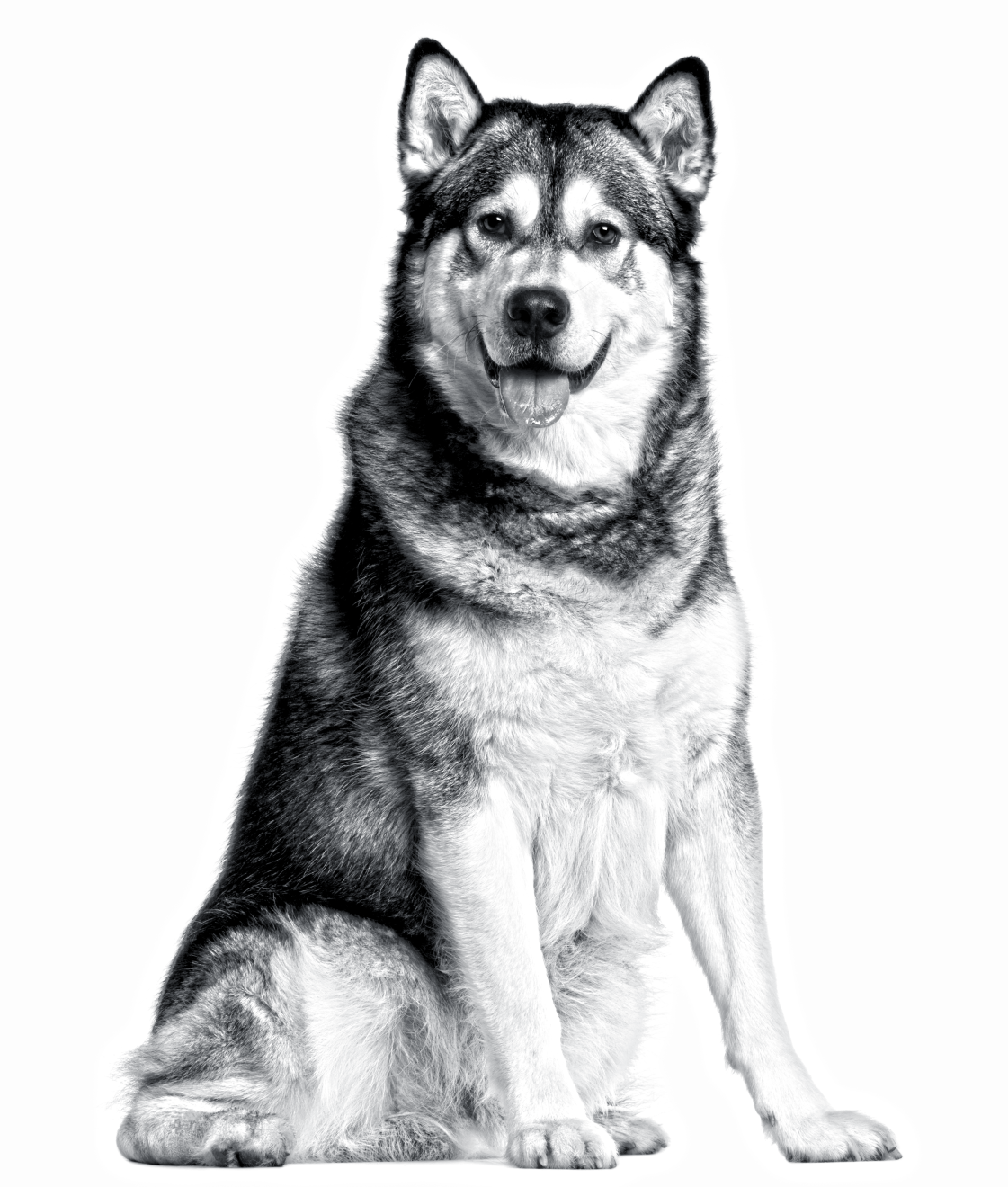
History of the breed
The 49th U.S. state is indeed the namesake of the Alaskan Malamute, but the breed’s name comes from the Mahlemiut, a group of Inuit people who lived on the Kotzebue Sound in northwestern Alaska. The breed, though, is said to have first come from a wolf-dog some 4,000 years old who accompanied Paleolithic hunters when they traversed land bridges of the Bering Strait into North America. The Alaskan Malamute dogs were used for their hulking body that could pull sleds full of cargo over these long, icy distances.
Various Malamute varieties developed over the years, since the Inuit culture spans much of the northernmost territory, stretching all the way to Greenland.
The American Kennel Club recognized the initial Kotzebue strain in 1935, and after World War II, two other Inuit strains were recognized by the Fédération Cynologique Internationale (FCI) in 1963 when the breed’s numbers had dropped drastically.
From head to tail
Physical characteristics of Alaskan Malamutes
1.Ears
2.Head
3.Body
4.Tail
5.Coat
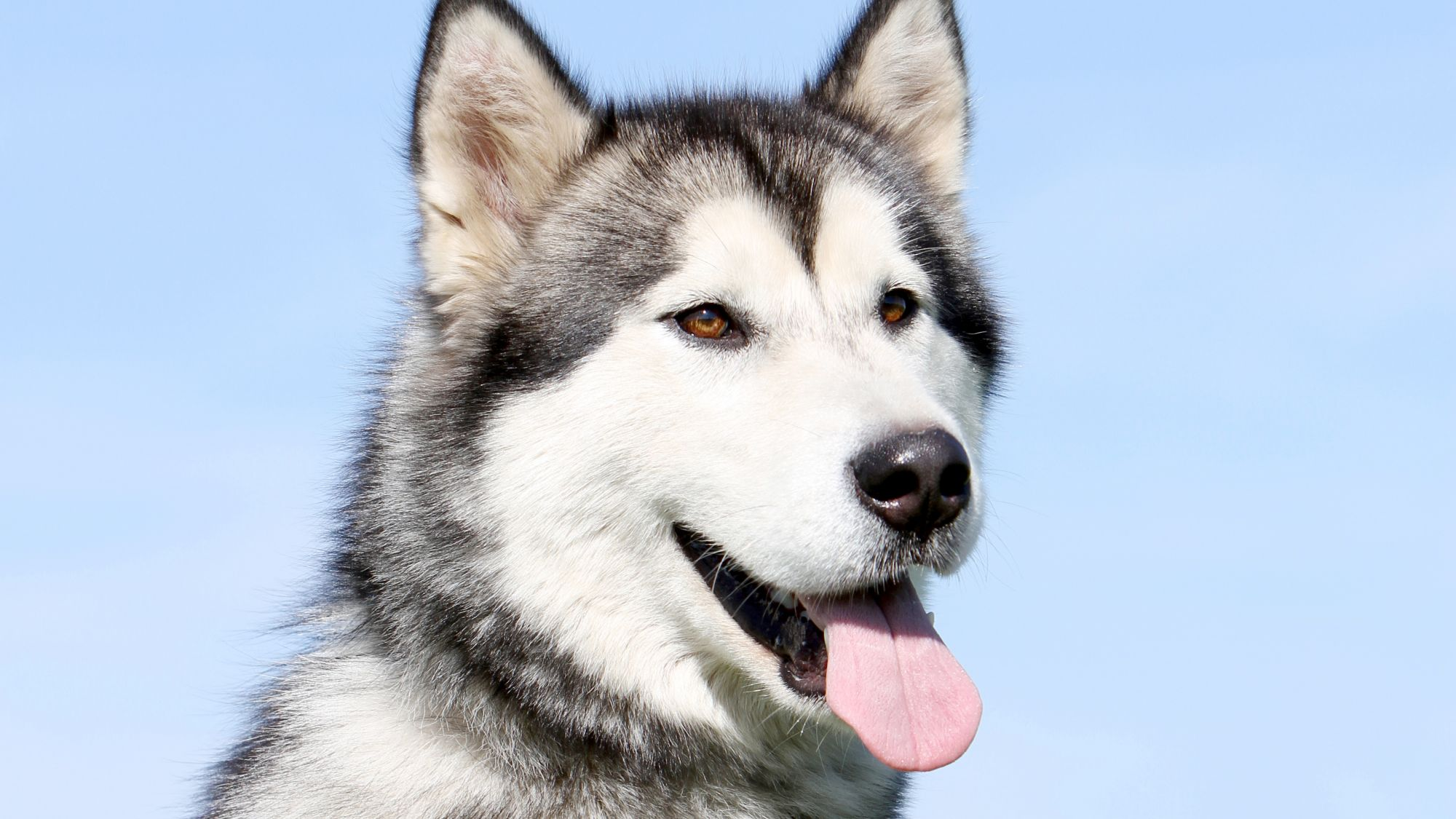
Things to look out for
From specific breed traits to a general health overview, here are some interesting facts about your Alaskan Malamute
A very clean bill of health
This is one dog that has few health problems. Routinely described as in “iron health”, the Alaskan Malamute is an extremely robust dog that has been bred for running and hauling heavy loads. One issue: hip dysplasia. Keep a lid on excessive activity during their early life to prevent the condition. Another: possible skin lesions, caused by a zinc deficiency. The dermatological condition is common to Nordic breeds like the Alaskan Malamute and the Siberian Husky. Monitor your dog, with your veterinarian’s aid, for any signs. Given their breeding, the Alaskan Malamute can also adapt easily to the harshest weather conditions and come out on top. However, the breed does not do well in hot weather.
They will dig.
Many dogs like to dig—to get at something or perhaps out of boredom—but the Alaskan Malamute breed has an innate need to make a hole in the ground. They are notorious for it, and it is not something, try as you may, that can be trained out of them. Make sure any outdoor fencing is dug deep into the ground, otherwise your Alaskan Malamute may just dig his way out.
Healthy diet, healthier dog

When choosing food for an Alaskan Malamute, there are many factors to consider: their age, lifestyle, activity level, physiological condition, and health including potential sickness or sensitivities. Food provides energy to cover a dog’s vital functions, and a complete nutritional formula should contain an adjusted balance of nutrients to avoid any deficiency or excess in their diet, both of which could have adverse effects on the dog.
Clean and fresh water should be available at all times to support good urinary regularity. In hot weather and especially when out exercising, bring water along and give your dog frequent water breaks.
Energy intake may also have to be adapted to the climatic conditions. A dog that lives outdoors in winter will have increased energy requirements.
The following recommendations are for healthy animals. If your dog has health problems, please consult your veterinarian who will prescribe an exclusively veterinary diet.
An Alaskan Malamute puppy’s requirements, in terms of energy, protein, minerals and vitamins, are much greater than those of an adult dog. They need energy and nutrients to maintain their body, but also to grow and build it. Until they are 15 months old, Alaskan Malamute puppies’ immune system develops gradually. A complex of antioxidants—including vitamin E—can help support their natural defenses during this time of big changes, discoveries, and new encounters. Their digestive functions are different from an adult Alaskan Malamute’s as well: their digestive system is not mature yet so it is important to provide highly digestible proteins that will be effectively used. Prebiotics, such as fructo-oligosaccharides, support digestive health by helping balance the intestinal flora, resulting in good stool quality.
It is important to choose a kibble with an appropriate size, shape, and texture. This growth phase also means moderate energy needs. Large-breed puppies, such as Alaskan Malamute puppies, whose growth period is long and intense, are especially susceptible to skeletal and joint problems, including limb defects, bone deformities, and joint lesions. The first part of growth is mainly concerned with bone development, although the muscles also start to grow. This means that a puppy that eats too much (takes in too much energy) will put on too much weight and grow too quickly. Limiting the energy concentration of a food for Alaskan Malamute puppies and feeding a correct daily amount will help control the speed of growth and minimize these risks.
Concentrations of other nutrients should be higher than normal in a specially formulated growth food. Although the calcium content in the food needs to be increased, maxi-sized breed puppies are more sensitive to excessive calcium intake. It’s important to understand then that adding any ingredients to a complete food formulated for the growth phase is at best unnecessary and at worst dangerous for the animal, unless prescribed by a veterinarian. Splitting the daily allowance into three meals a day is recommended until they are six months old, at which point you can switch to two meals per day.
Throughout their life, it is important to avoid feeding Alaskan Malamutes human foods or fatty snacks. Instead, reward them with kibbles taken from their daily meal allowance, and strictly follow the feeding guidelines written on the package in order to prevent excessive weight gain.
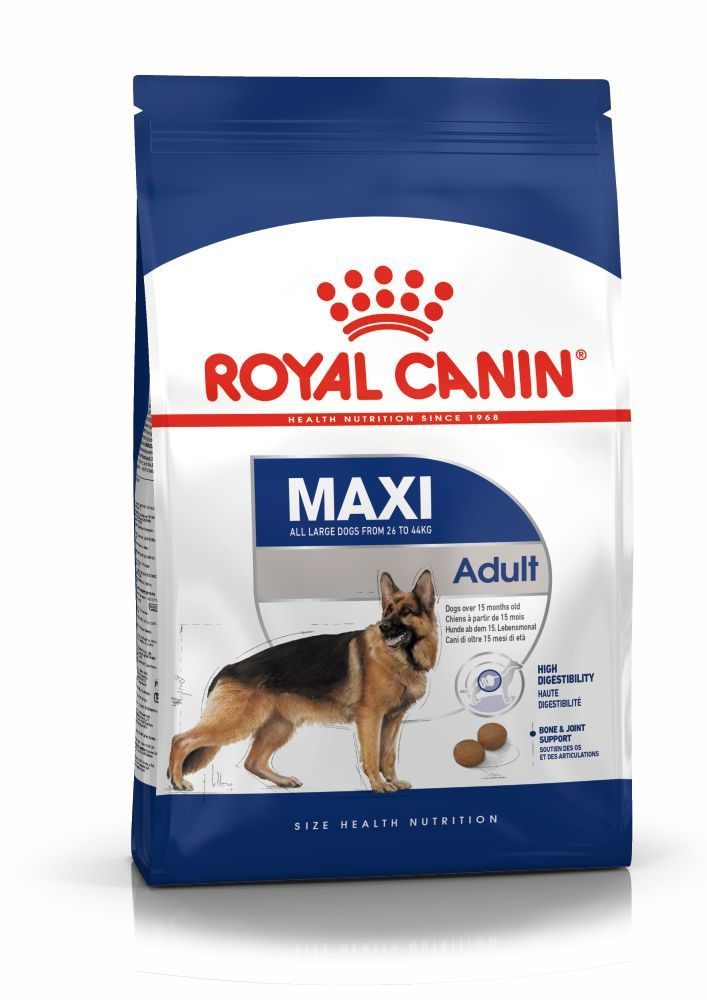
The main nutritional goals for adult Alaskan Malamutes are the following:
Maintaining an ideal body weight by using highly digestible ingredients and keeping the fat content at a sensible level
Helping to support the health of their bones and joints with glucosamine, chondroitin, and antioxidants
Promoting optimal digestibility with high-quality protein and a balanced supply of dietary fiber
Helping preserve the health and beauty of the skin and coat with the enriched addition of essential fatty acids (especially EPA-DHA), essential amino acids, and B vitamins.
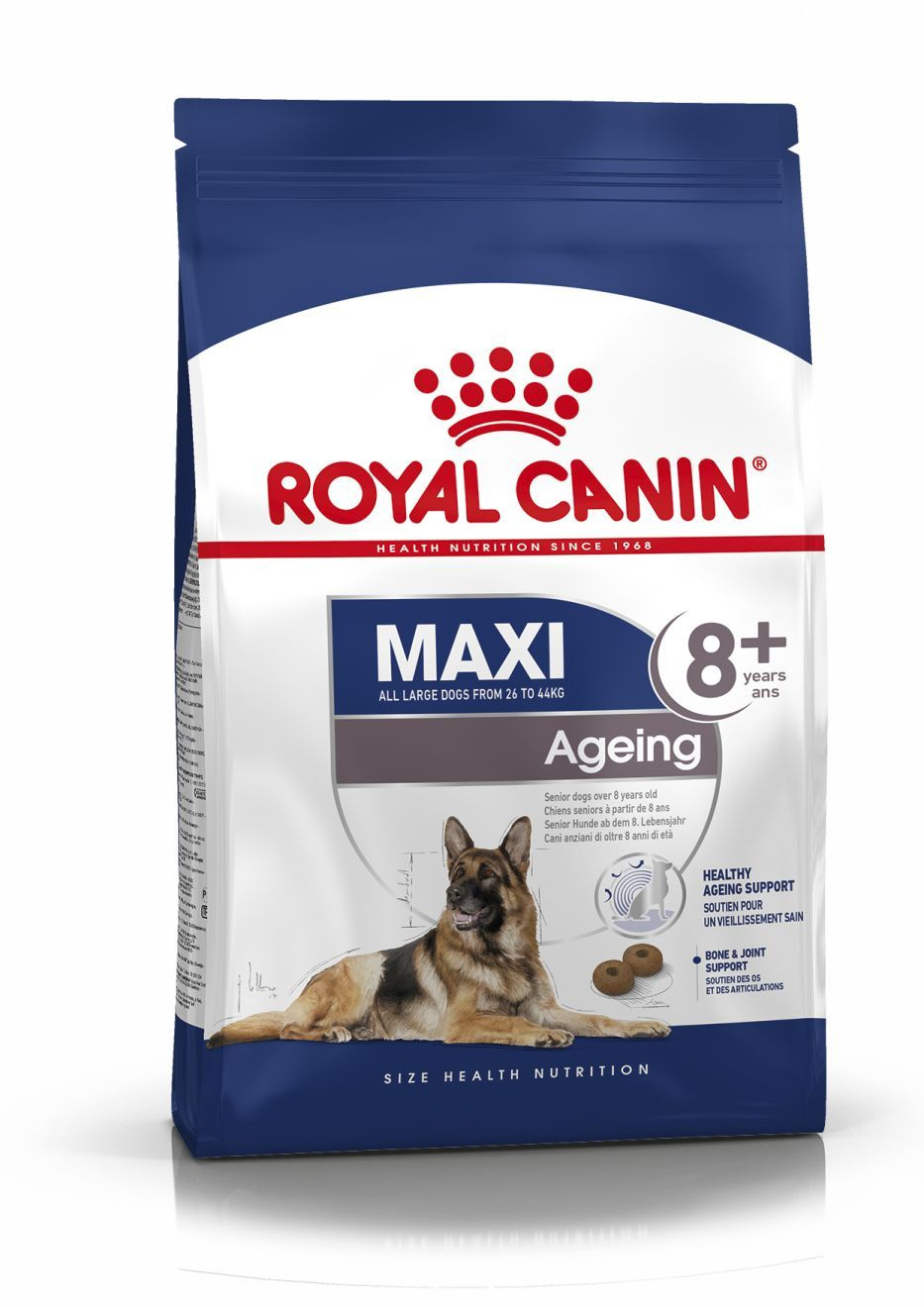
After 5 years old, Alaskan Malamutes will start facing the first signs of aging. A formula enriched with antioxidants will help maintain their vitality, and specific nutrients, such as chondroitin and glucosamine, will help support healthy bones and joints. Aging is also accompanied by the modification of digestive capacities and particular nutritional requirements, so food for older Alaskan Malamutes should have the following characteristics:
Higher vitamin C and E content. These nutrients have antioxidant properties, helping to protect the body’s cells against the harmful effects of the oxidative stress linked to aging
High-quality protein. Contrary to common misconception, lowering the protein content in food offers little benefit in terms of limiting kidney failure. In addition, older dogs are less efficient at using dietary protein than younger dogs. Reducing the phosphorus content is a good way of slowing down the gradual deterioration of kidney function
A higher proportion of the trace elements iron, zinc, and manganese to help keep the skin and coat in good condition
A higher quantity of polyunsaturated fatty acids to help maintain the quality of the coat. Dogs can normally produce these fatty acids, but aging can affect this physiological process
As they age, dogs are increasingly prone to teeth problems. To ensure they continue to eat enough, the shape, size, and texture of their kibble needs to be tailored to their jaws.
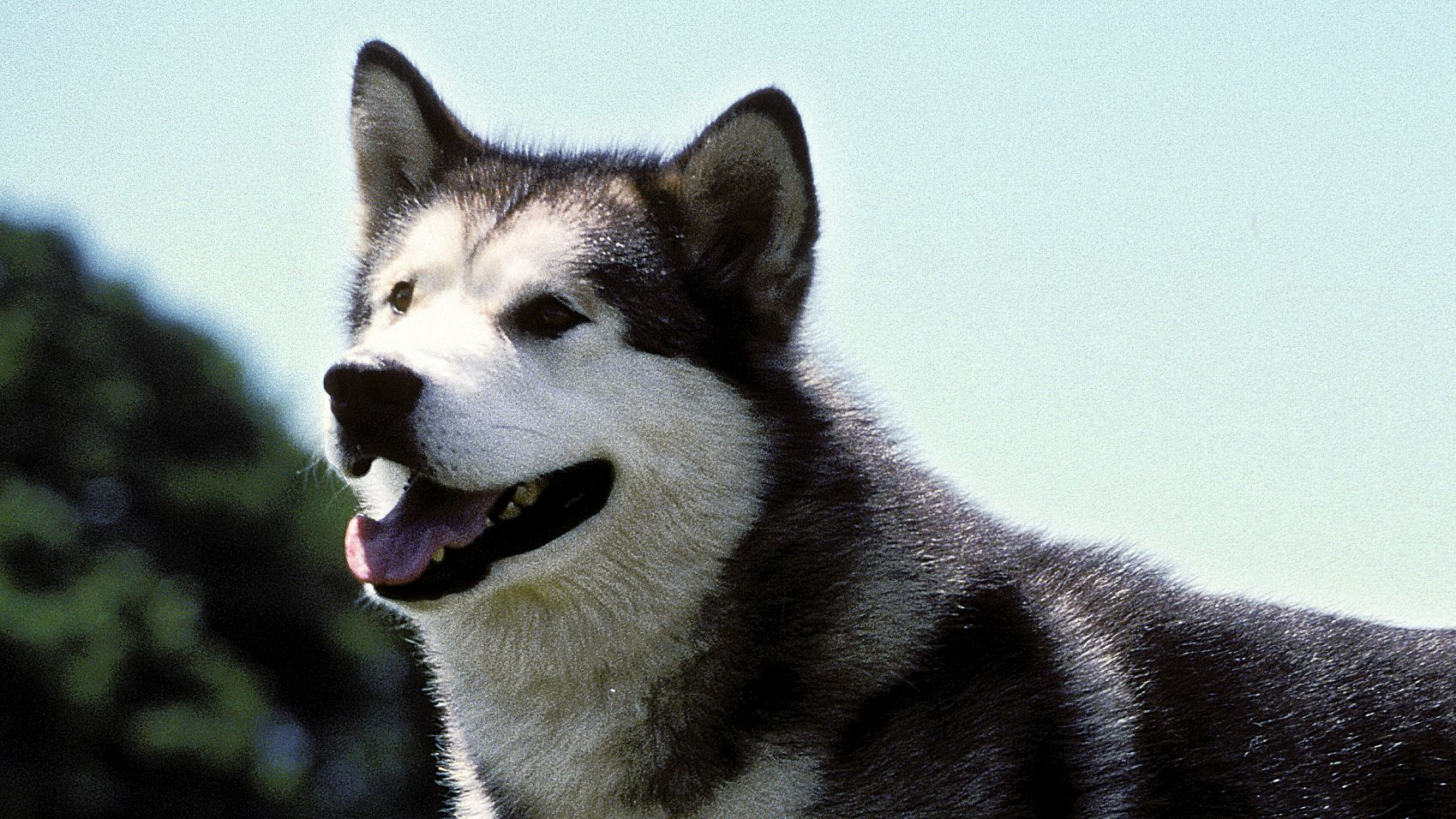
Caring for your Alaskan Malamute
Grooming, training, and exercise tips
7/7
All about Alaskan Malamutes
Both breeds are more similar than they are different. They have friendly temperaments and are not prone to barking. Both are ancient breeds that were used as sled dogs. From the start they were considered members of the family and are very protective as a result. Siberians are harder to train, and so they need a very experienced owner. Where they differ most is in size: Alaskan Malamutes are larger than Siberians, but both breeds are endowed with a recognizable bushy tail.
A tall dog that can weigh up to 100 pounds, the Alaskan Malamute can be a handful and so needs an owner that is well-prepared. The breed is not one for an inexperienced owner, nor for small spaces as they need room to run and exercise. The Alaskan Malamute also tends to shed a lot, so be ready to do some brushing. And vacuuming.
Suggested Breeds
Read more on this topic
Sources
- Veterinary Centers of America https://vcahospitals.com/;
- Royal Canin Dog Encyclopaedia. Ed 2010 and 2020
- Banfield Pet Hospital https://www.banfield.com/
- Royal Canin BHN Product Book
- American Kennel Club https://www.akc.org/
Like & share this page